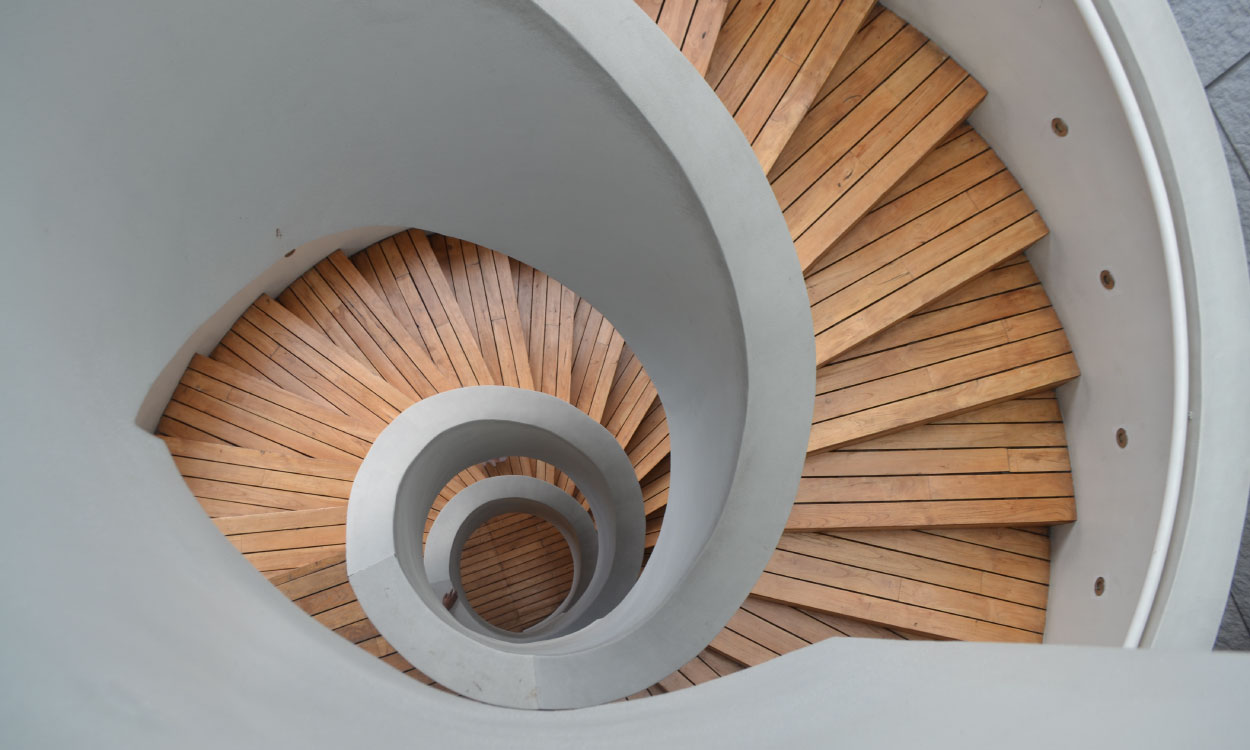Is your old house’s creaky staircase driving you crazy? Fortunately, there are simpler solutions than installing a new staircase or hiring a carpenter to mend a creaking staircase. Instead, you can do it yourself with a few simple tools and save money and time.
Finding the source of a creaky wooden stair is necessary before you can remedy it. Your repair could also depend on where the squeak is coming from. As you slowly ascend your stairs, mark each one with masking tape or a sticky note to record which steps squeak and exactly where it is coming from. Then, to identify whether the noise originates from the side, the back, or the front, stand in the centre of each squeaky step and rock back and forth.
A stair that squeaks from the back usually indicates its riser is loose. Likewise, the step is loose at its stringer if the squeak originates from either side. A riser is a vertical gap between steps, and a stringer is a board that’s joined to every riser on each side of the staircase. The saw-toothed stringer holds the staircase together and provides stability.
Choose one of the following repair methods once you have determined the source of the squeak.

Use Lubrication To Reduce The Squeak
Filling the gap between the tread and the riser above it with a lubricant like powder graphite or talcum powder is one of the simplest ways to silence a squeak originating from the rear or sides of the tread.
A piece of paper should be wedged at the back of the tread, with a small amount of powder to pour on the paper across the width. Then you should work the powder as deeply into the crack between the tread and the riser as possible using your finger, a piece of cloth that has been tightly twisted, or a stiff paintbrush. The powder reduces friction, quieting the noise even though the two wooden pieces won’t cease rubbing together.
Trim Screws
Use screws to tighten the junction between the riser and tread if the step is creaking from the front. For this, use trim head screws, available at any hardware shop, and having a smaller head than standard screws makes them simpler to conceal.
Drill three properly spaced pilot holes across the front portion of the tread where it connects to the riser. To prevent foot injury, place the screws and drill them, so the heads are below the tread’s surface.
You can seal the indentations with wood filler to conceal the screw heads once you have drilled the screws in there so they won’t hurt an unlucky barefoot. Pick a colour that matches the wood on your steps, but there are many options available, so this shouldn’t be a problem.
Repair squeaky stairs from below.
Many internal staircases are difficult to access below. Still, if yours does, you can stop squeaks from there for the most long-lasting effects. For each noisy step, you’ll need three tiny, triangular glue blocks made of wood. Suppose your neighbourhood home improvement store doesn’t have prefabricated glue blocks. In that case, you may make your own by taking a two-inch wooden square and cutting it in half from across the diagonal to form two equal triangular pieces.
Each glue block should have wood glue applied to its two shorter sides before being firmly pressed into the correct angle formed by the riser and tread coming together. Place two blocks on both sides of the step’s edges, with one block in the step’s centre. As you place each glue block, give it a little jiggle to remove any air bubbles.
Install Glue Blocks
The strongest repair can be made with triangle glue blocks if you can access your staircase from underneath. Just make a two-inch wooden cube diagonally sliced. Push the block into the right angle in which the tread meets the riser after applying some wood glue to the shorter side of each triangle.
For best results, use one glue block in the middle of the stair and one on either end of the tread. To ensure that all air bubbles from the wood glue are eliminated, press hard. Apply two screws to each block after the adhesive has dried. While the other must be vertical into the tread, one must be horizontal into the riser.
Use A Quadrant Or A Mould
It is also feasible to glue on a quadrant or moulding if a loose tread or riser is discovered. This lengthy piece of wood can be fastened with glue at the top or bottom of the rise, perhaps both. We also advise nailing the moulding to the tread and riser for added adherence.
Although it necessitates a little more precision work, this technique is a more aesthetically acceptable substitute for simply nailing or screwing the treads and risers together. Applying these mouldings to all treads is a good idea if the stairway is exposed for aesthetic reasons.





More Stories
How To Make Internet Marketing Paid Membership Sites Work For You
Combining Affiliate Marketing With a MLM Network
Effective Direct Marketing – The Krispy Kreme Model